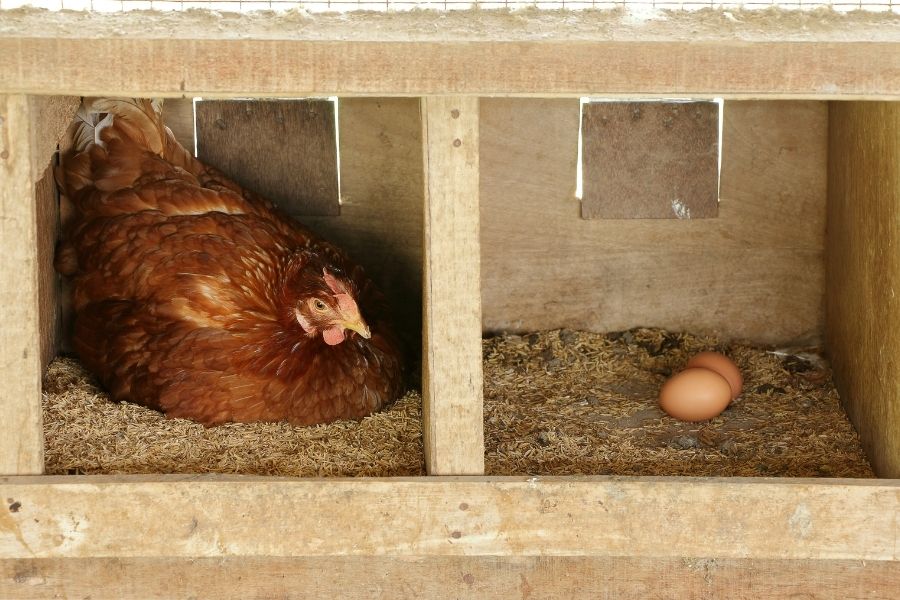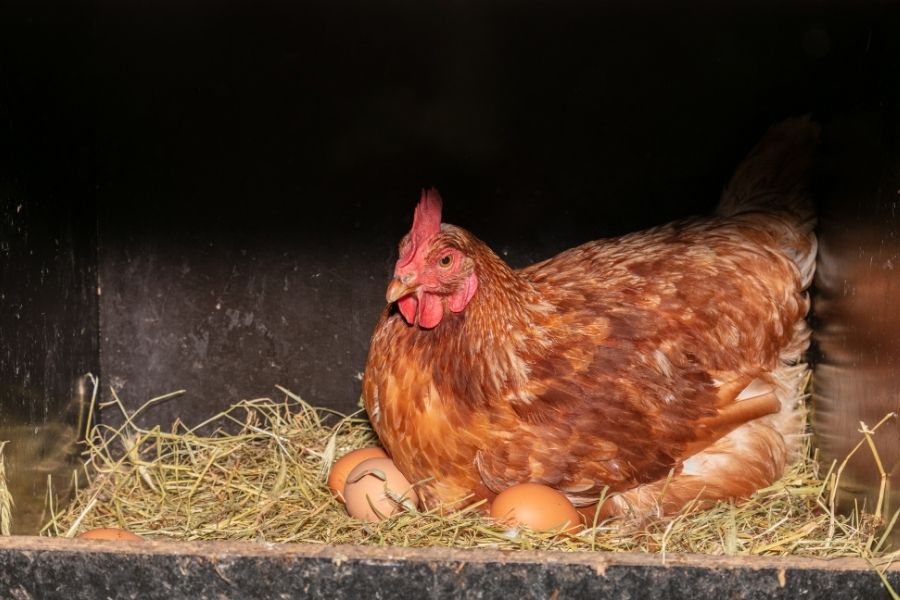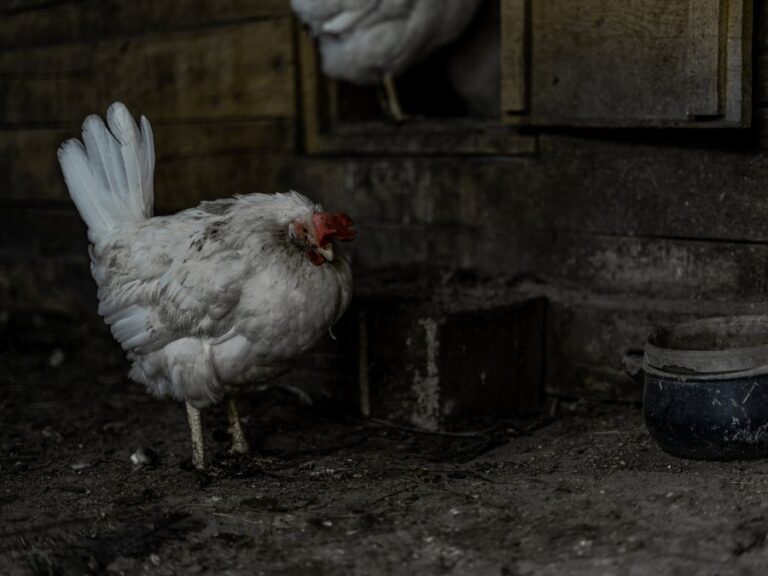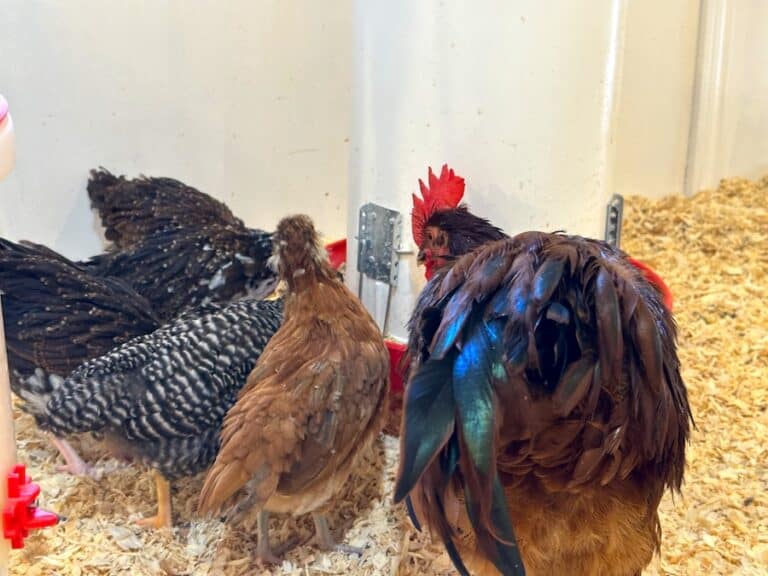Do Chickens Need Nesting Boxes? Why Or Why Not

If you’re raising chickens, you’ve probably heard about the importance of nesting boxes. But are they truly necessary, or can your hens lay eggs comfortably without them? Nesting boxes provide a designated space for hens to lay their eggs, but there are also alternative setups to consider.
In this article, we’ll explore why nesting boxes are often recommended, the benefits they provide for both you and your chickens, and situations where they might not be essential. Whether you’re designing a new coop or looking to improve your flock’s environment, this guide will help you decide if nesting boxes are the right choice for your setup.
Disclaimer: This article includes affiliate links. If you click one of them, we may receive a small percentage of the sale at no extra cost to you. Thank you for your support!
Why Use Nesting Boxes
As mentioned previously, nesting boxes are not required for hens to lay eggs, but they are a great asset and a worthy investment. Nesting boxes provide your chickens with a safe, private and comfortable place to lay eggs and encourage chickens to lay in the boxes versus on the ground. This helps to reduce the risk of eggs getting broken or trampled on.
Having nesting boxes also has benefits for you, the chicken keeper. Rather than searching around the coop and surrounding areas for eggs, you can easily collect them in the nesting boxes each day.
How Many Nesting Boxes Do You Need?
A general rule of thumb is to have one nesting box for every four to five hens. If you do not have enough nesting boxes, you may begin to get territorial issues, and your hens may start to fight one another. In addition, the nests can become overcrowded and result in broken eggs.
Here is an example of how many nesting boxes are recommended based on the number of chickens. However, you can get away with fewer or more boxes depending on the size of your hens and their laying frequency.
| Number of Chickens | Number of Nesting Boxes |
|---|---|
| 1-4 | 1 |
| 4-8 | 2 |
| 8-11 | 3 |
| 11-15 | 4 |
| 15-20 | 5 |
How Big Should Nesting Boxes Be?
Typically, nesting boxes should be 12 inches around. For larger hens, the boxes can be up to 14 inches. The reason is that they should be snug to ensure only one hen uses the box at a time. If they are too big, your hens will try and squeeze in while another hen is laying.
To learn how to build your own nesting boxes, check out our article “How To Build Nesting Boxes For A Chicken Coop“
What To Put In Nesting Boxes

You can use numerous different materials in nesting boxes. The purpose of putting bedding in your nesting boxes is to create a safe, clean and comfortable place for your hens to lay eggs.
A few popular materials for nesting boxes are:
Sand
Sand is arguably one of the top options for bedding in laying boxes as it is natural, controls odour, absorbs moisture, is great for dust bathing and reduces bacteria growth and pathogens. However, it is important to use coarse sand over fine-grained sand in your chicken coops.
Leaves
Leaves are an affordable option that your chickens will love to scratch around in. You can collect and mulch leaves in your backyard for free.
While there are a few methods to mulch leaves, we personally use an all-in-one system similar to the Craftsman Leaf Blower, which also includes a vacuum and mulcher.
Another method is to rake leaves into a pile and then use a lawnmower to mulch the leaves. For both methods, it is important to ensure the leaves are completely dry before putting them in your coop, as this could lead to mould.
Sawdust
Sawdust is commonly used in nesting boxes as it is quite absorbable, keeps odours under control and is easy to clean. It is important to note that sawdust that is too fine can cause respiratory issues for your chickens. If you use sawdust, we recommend using larger pieces and keeping an eye out for any changes in your chicken’s health, such as coughing and wheezing.
Wood Shavings
Wood shavings are easily absorbent, affordable and easy to clean. However, they can lead to respiratory issues, so it is best to use larger pieces to reduce fine dust. Cedar is also not recommended as it contains oils that can be toxic to your hens.
Straw
Chickens love straw for bedding as they enjoy scratching and playing in it. Straw is also an excellent insulator and absorbs water easily. However, it does not release water and should be changed every week to prevent pests and mould.
Washable Nesting Pads
Washable Nesting Pads, such as the DenForste Washable Nesting Pads, are easy to clean and reusable. They have increased friction to help prevent eggs from rolling and cracking. To help chickens acclimate to washable nesting pads, you can add a bit of bedding on top to help encourage them to use them at first.
How To Train Hens To Use Nesting Boxes
Once you have enough nesting boxes for your flock, be sure to put in clean bedding to make it a desirable laying space.
To encourage your hens to use the nesting boxes, try placing a ceramic egg, such as the Happy Hen Treats Ceramic Nest Eggs, in the nesting box. This will help your hens identify a safe and suitable place to lay eggs while training and discouraging your hens from eating their eggs.
Why Your Hens Are Not Using Their Nesting Boxes
There are a few reasons why your hens may not use their nesting boxes. We are going to go over the top five most common reasons.
- Not enough nesting boxes
- The boxes are dirty or smelly
- Your hens are stressed
- Not enough daylight
- There are pests
Not enough nesting boxes
A common reason that your hens may not be using their nesting boxes is that there are not enough. If you do not have enough boxes, it could lead to territorial behaviour and bullying within your flock. This can cause the non-dominate hens to lay eggs elsewhere.
The boxes are dirty or smelly
Another reason could be because the nesting boxes are dirty or smell. Your hens will not want to lay eggs in dirty or smelly bedding. Ideally, the bedding should be changed out weekly, with increased cleaning of the more chickens you have. This will help your hens feel more relaxed and comfortable in their boxes.
Your hens are stressed
Stress can be a contributor to why your hens are not laying eggs. A few factors could cause stress, such as predatory attacks, overly hot or cold weather, new additions to your flock, overcrowded coop, and parasites.
Stress could be the culprit if you have recent environmental changes and notice your hens are either laying eggs in random places or not laying at all.
Not enough daylight
Hens need around 14 to 16 hours of daylight to keep up with egg production. If your chickens do not receive enough sunlight, you can use artificial lights in your coop to stimulate the sun. If you do this, be sure to set them on an automatic timer.
It is natural for your hens to decrease their egg production in the winter months. This is their time to moult and take a break from laying.
There are pests
Check your coops and chickens for pests such as mites and lice. If there are mites in their nesting boxes, they may start to avoid using them. Regular cleaning of the nesting boxes and dust baths can help keep pests away. Consider sprinkling some diatomaceous earth in the bedding and around the coop to help with pest control and odour.






